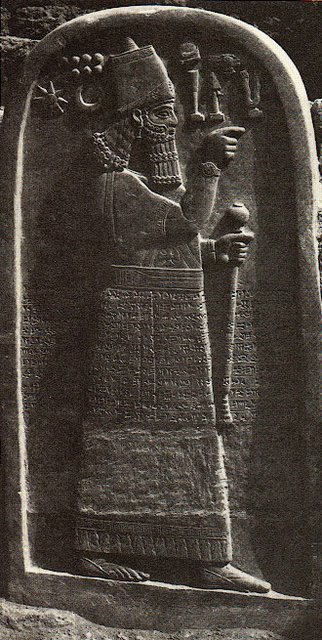King Hazael of Aram had oppressed the Israelites throughout the reign of Jehoahaz. But the Lord was gracious and merciful to them, and He turned back to them for the sake of His covenant with Abraham, Isaac, and Jacob. He refrained from destroying them, and He still did not cast them out from His presence. When King Hazael of Aram died, his son Ben-hadad succeeded him as king; and then Jehoash son of Jehoahaz recovered from Ben-hadad son of Hazael the towns which had been taken from his father Jehoahaz in war. Three times Joash defeated him, and he recovered the towns of Israel. (2 Kings 13-22-25)
Date- 797 BCE
Current Location- Iraq Museum, Baghdad (IM 70543)
Language and Script- Assyrian?; cuneiform
Biblical Verses- 2 Kings 13-10–25
General Information-
During the reign of Shamshi-Adad V, Shalmaneser III’s successor, Assyria’s influence in the West waned. The next ruler, Adad-Nirari III, reversed this trend with strong military campaigns. Evidence of this is seen in the Tel al-Rimah stele, erected by Nergal-eresh, the Assyrian governor of Upper Mesopotamia, which summarizes Adad-Nirari’s campaigns and triumphs in the West. The stele features an image of the king with the inscription carved across his waist and religious symbols above him. Though the part of the inscription naming Nergal-eresh was erased after his downfall, it is still legible.
Relevance to Ancient Israel- Part of the inscription has Adad-Nirari’s boast that he subdued “the entire lands of Amurru and Hatti” and imposed tax and tribute upon their leaders. Listed among the kings providing tribute is the Israelite king Joash.
Circumstances of Discovery and Acquisition- The stele was discovered in 1967 during excavations at the site of Tell al-Rimah in northern Iraq near Jebel Sinjar.
